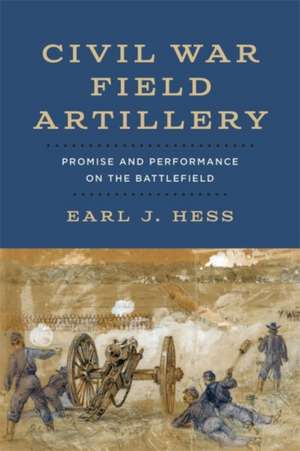Civil War Field Artillery
Autor Earl J Hessen Limba Engleză Hardback – 5 oct 2022
Preț: 368.09 lei
Nou
70.44€ • 75.32$ • 58.73£
Carte disponibilă
Livrare economică 28 martie-11 aprilie
Specificații
ISBN-10: 0807178004
Pagini: 424
Dimensiuni: 158 x 235 x 36 mm
Greutate: 0.73 kg
Editura: Lsu Press
Descriere
The American Civil War saw the creation of the largest, most potent artillery force ever deployed in a conflict fought in the Western Hemisphere. It was as sizable and powerful as any raised in prior European wars. Moreover, Union and Confederate artillery included the largest number of rifled pieces fielded in any conflagration in the world up to that point. Earl J. Hess's Civil War Field Artillery is the first comprehensive general history of the artillery arm that supported infantry and cavalry in the conflict. Based on deep and expansive research, it serves as an exhaustive examination with abundant new interpretations that reenvision the Civil War's military.
Hess explores the major factors that affected artillerists and their work, including the hardware, the organization of artillery power, relationships between artillery officers and other commanders, and the influence of environmental factors on battlefield effectiveness. He also examines the lives of artillerymen, the use of artillery horses, manpower replacement practices, effects of the widespread construction of field fortifications on artillery performance, and the problems of resupplying batteries in the field. In one of his numerous reevalutions, Hess suggests that the early war practice of dispersing guns and assigning them to infantry brigades or divisions did not inhibit the massing of artillery power on the battlefield, and that the concentration system employed during the latter half of the conflict failed to produce a greater concentration of guns. In another break with previous scholarship, he shows that the efficacy of fuzes to explode long-range ordnance proved a problem that neither side was able to resolve during the war. Indeed, cumulative data on the types of projectiles fired in battle show that commanders lessened their use of the new long-range exploding ordnance due to bad fuzes and instead increased their use of solid shot, the oldest artillery projectile in history.
